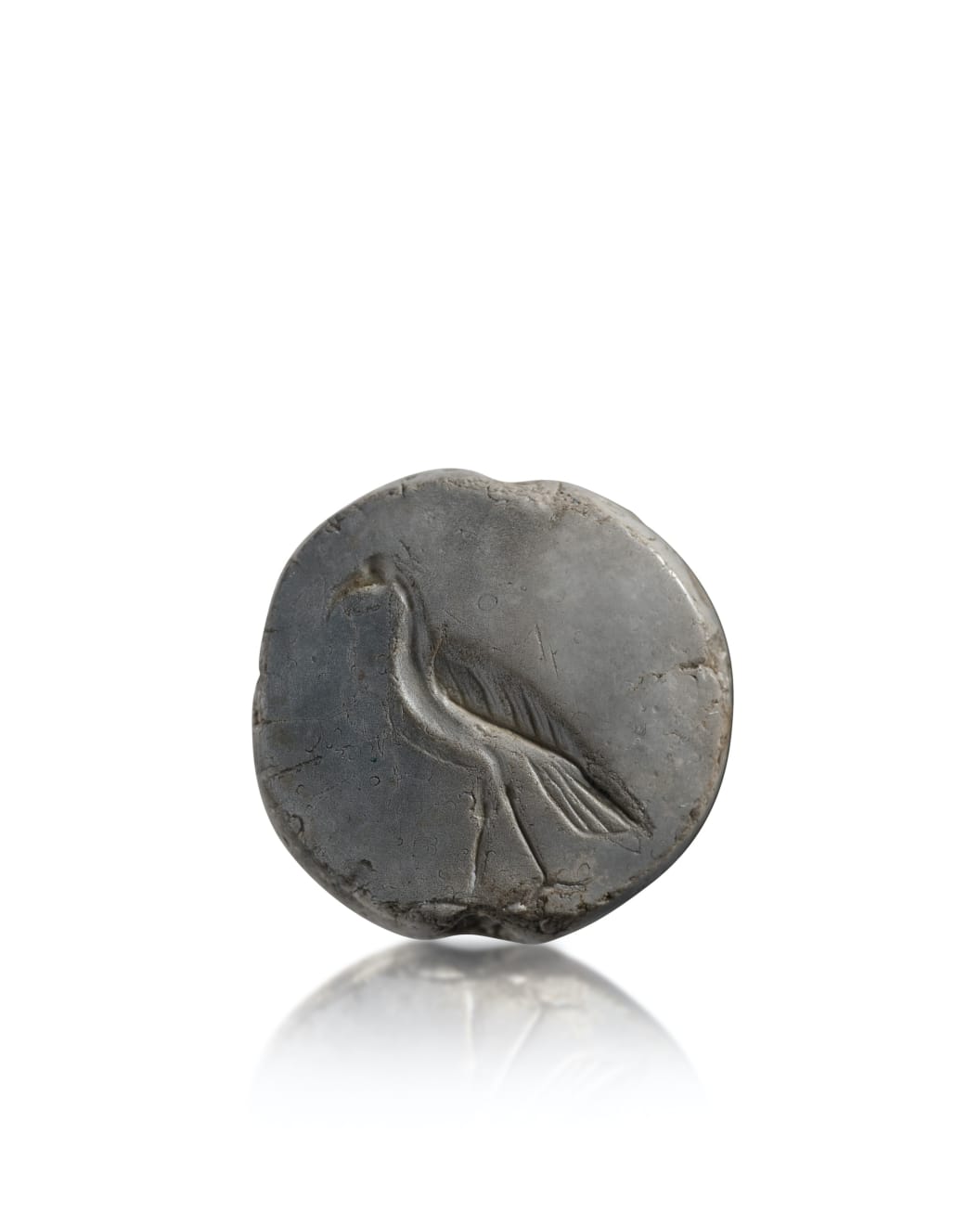Greek
A Graeco-Persian banded agate intaglio of a bird set as a modern gold pendant, circa 5th century BC
Banded agate; gold
Diameter: 1.6 cm
The round gem is carved on one side with a water bird, facing left and is drilled through the centre vertically for suspension. The agate has been burnt leaving a...
The round gem is carved on one side with a water bird, facing left and is drilled through the centre vertically for suspension. The agate has been burnt leaving a cloudy surface. The reverse of the intaglio is an eye agate.
The gem is intact with minor surface wear and chipping.
The gem is intact with minor surface wear and chipping.
Provenance
Bedfield Hall Collection, UK, acquired at Christie's, London, in 1967Literature
Depictions of water birds, either alone or with women, were a popular theme on ancient Greek gems. It has been suggested that the 'reason for the appearance of the heron and similar birds is that they were domestic pets, cherished by the engraver’s patrons, and admired and studied by the engraver.' J.D Beazley (ed. J. Boardman), The Lewes House Collection of Ancient Gems, Oxford, 2002, p.50. A very fine example can be found in the Museum of Fine Arts Boston, inventory no. 21.1206.Graeco-Persian gems of birds were popular in the 5th century BC. For a similar example see J. Boardman, Greek Gems and Finger Rings: Early Bronze Age to Late Classical, London, 1970, pp. 287-9, nos. 469, 490, 514, 518-519.



